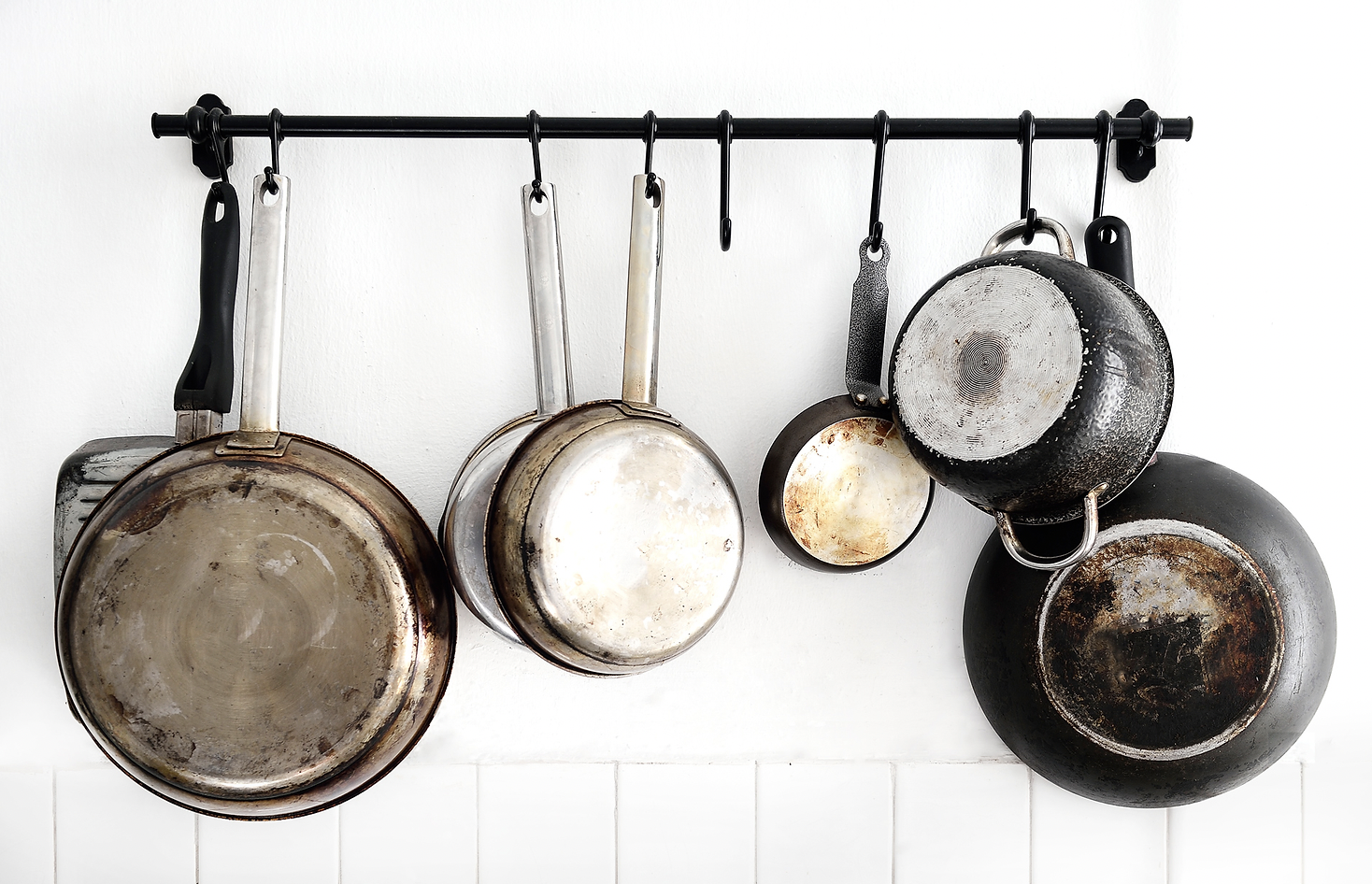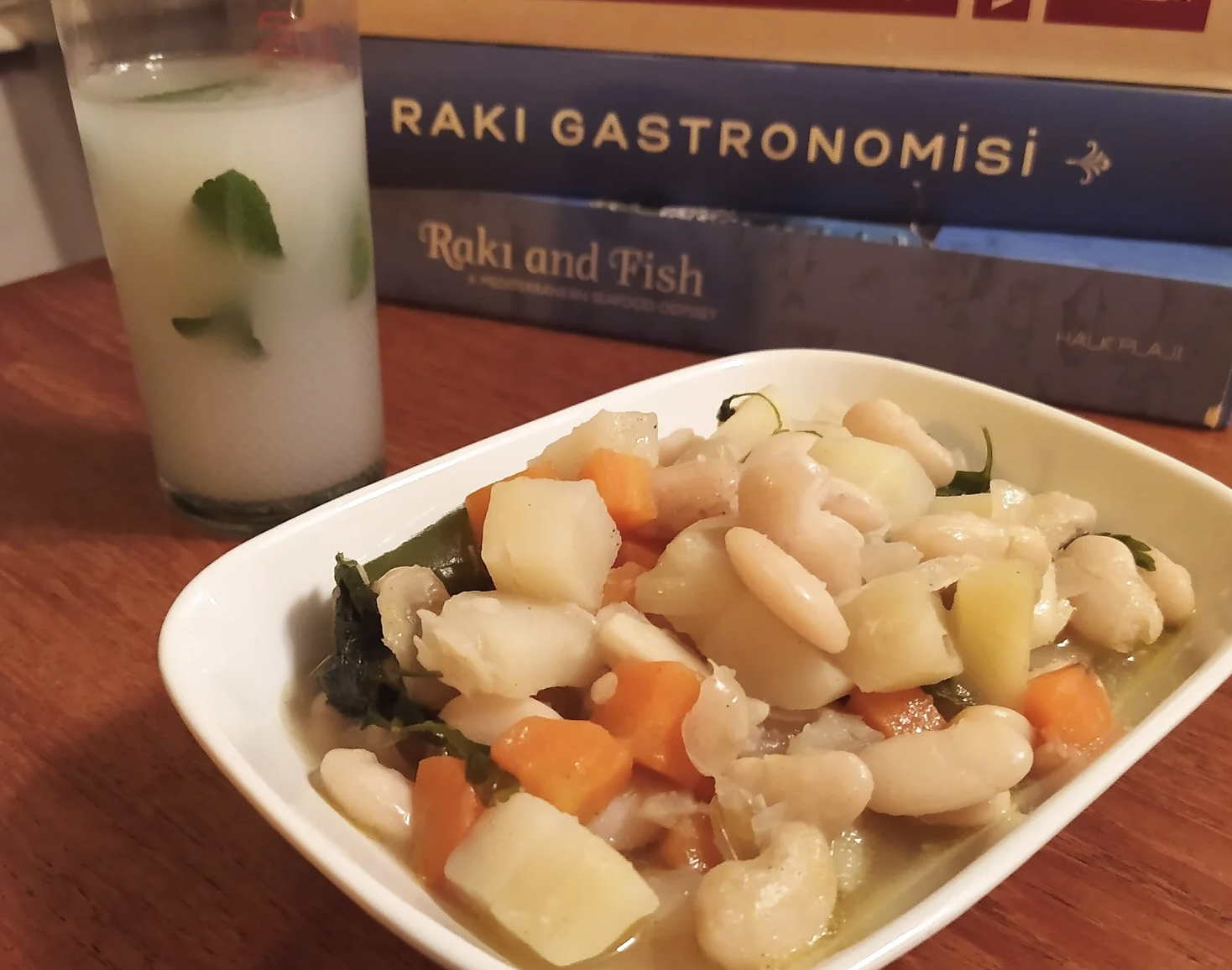Pilaki and Patience as Virtue
Of all the mezzes that adorn a meyhane table, perhaps none is as universally liked as the barbunya (borlotti beans) pilaki. In author Takuhi Tovmasyan’s words, “It is the most irreplaceable mezze on any rakı table.” What is it that turns a braised vegetable dish made from quite common ingredients into one of the most iconic features of mezze culture?
From Plakion to Pilaki
According to the Nişanyan Dictionary, the word pilaki comes from the Greek plakion, which is a diminutive of ancient Greek plak, meaning pan or tray. Essentially plakion was used to describe pans or flat skillets. According to historian and culinary expert Marianna Yerasimos, these pans were made of waterproof limestone. And such was the importance assigned to the pilaki that according to the Dictionary of Ottoman Cuisine,during the reign of Bayezid the 2nd (1481-1512), only pans handmade in Mecca were used in the palace kitchens. Since the 19th century however, the word pilaki has been used to refer to dishes made in such pans or skillets. But of course, what characterises pilaki is not merely the pan it is cooked in but the method with which it is prepared.
There is no Pilaki but Pilakis
As author/culinary expert Levon Bağış notes there is no pilaki but pilakis, as fundamentally pilaki is the generic name given to dishes cooked using the braising method with onions, vegetables, and olive oil as core ingredients.
A brief examination of the earliest Ottoman cookbook affirms Bağış’s assertion. Mehmet Kamil Pasha’s A Refuge for Cooks (1844) lists five different pilakis under the section “Pan Cooked Dishes and Pilakis”: beef pilaki; grey mullet pilaki; mackerel pilaki; oyster pilaki; and (other types of) fish pilaki. Muammer Mehri’s Modern Cookbook from 1924 includes a recipe for turbot pilaki made with onions, garlic, parsley, saffron, and olive oil. And, Rabiha Edhem’s La Bonne Cuisine Turque, published in 1921 in French lists lima beans pilaki as an important feature of Istanbul’s cuisine.
Fish continues to be a favorite ingredient for pilaki lovers. Bonito, gurnard, and mackerel are the most commonly used fish in pilakis.
The first written recipe for pilaki is found in traveler Evliya Çelebi’s Seyahatname written in the 17th century and interestingly, it is the only recipe we find in the lofty travelogue. According to Çelebi, pilaki is made in a special pan made from limestone. First chopped parsley, onion, celery, and leeks are laid at the bottom of the pilaki pan. Anchovies, seasoned with black pepper and cinnamon are then placed on top.
Photo: Ara Güler
After adding a generous amount of olive oil, the pan is covered and cooked for about an hour in medium heat. So delicious is the outcome that Çelebi claims, once you eat the pilaki you feel rejuvenated from head to toe.
Modern Barbunya Pilaki
Let’s leave fish aside for the moment and focus on barbunya pilaki. First things first: beans need to be soaked in water overnight in order to attain the perfect texture. And keep in mind that should you wish to cook your pilaki in traditional Armenian style, you need to use lima beans instead of borlottis.
Fry chopped onions, sliced garlic and a teaspoon of granulated sugar in olive oil and for a few minutes. Sugar is the key ingredient here as it is the main reason why olive oil dishes that Istanbul’s cuisine is famous for are so rich in aroma. Then add the beans, carrots, and celery stalks for a bit of a kick and fry for a couple of more minutes. Finally, add parsley, sliced tomatoes, black peppers and perhaps most importantly cinnamon to the mix (because as Bağış righty notes, pilaki without cinnamon is not pilaki). Fry for a minute or so, add water to cover and in low heat continue to cook until the beans absorb the juices. Pilaki can be eaten lukewarm as well as cold but we strongly suggest serving it with lemon wedges to enhance the taste even further.
Perhaps the second most universally liked pilaki dish is mussels pilaki. Fry chopped onions in olive oil until they are pinkish. Add sliced carrots and banana peppers and fry for about a couple of minutes. Add three quarters of a cup of water and mix in finely chopped celery sticks, garlic and granulated sugar. Once vegetables are tender, add chopped tomatoes and cleaned, debearded mussels. Cook in low heat until mussels and vegetables absorb all the juices. Serve with finely chopped parsley on top.
It is the braising that gives pilaki its delicious flavor. Simmering in low heat, and letting vegetables release and cook in their own juices means the tastes of all the ingredients are intermingled. And the beans’ texture – neither hard nor mushy but just tender enough to melt in your mouth – adds even more succulence to the final product.
It’s All About Patience
As mentioned above, barbunya pilaki is an indispensable feature of meyhane cuisine and culture. According to author Sermet Muhtar Alus, during the early years of the 20th century, Istanbulites with a penchant for meyhanes would rush to get tables at Aktin’s place in Sandıkburnu (borough in south of Istanbul on the shore of the Sea of Marmara which once was famous for its meyhanes) simply to be able to enjoy his son-in-law Aris’s bean pilaki. What is it that makes barbunya pilaki so special?
Novelist Mario Levi once wrote that the most delicious pilaki he ever had was in a small restaurant in Bahçekapı (one of the oldest boroughs in the inner city, adjacent to Eminönü): “It wasn’t like any other pilaki I’ve had before, no. It was eaten lukewarm and served in tiny, white bowls. Like it was a common bean dish. But it was anything but common! It was glutinous, oily. I was sure that there was some secret ingredient that made it so delicious.
Photo: Tan Morgül
One day I asked the owner Fehmi what that secret ingredient was. He looked at me, smiled, and waved his hand in dismissal before saying: ‘It’s not about what you put in it, it’s about how you cook it. It is a question of patience. Like everything else.’”
Patience. Taking time. Not rushing. Simmering. Spreading enjoyment across time. These are all notions that one would associate with meyhane culture. Indeed, time functions differently in a meyhane. You do not drink fast. You do not eat fast. You do not talk fast. You do not live fast. Meyhane is a space that reminds you, forces you to stop rushing, enjoy its offerings at a low, simmering pace. This code of conduct, brewed over hundreds of years, is what author Ahmet Rasim refers to when he writes: “One bluefish cheek lasts a hundred sips of rakı.” We could easily replace the bluefish cheek with pilaki and nothing would change.
Another very common Ottoman cooking method that bears similarities to pilaki is yahni, which is the generic name given to vegetable, meat, or fish stews prepared in a vast area from Southeast Asia to the Balkans. Unlike pilaki, yahni is a stew cooked with meat or fish broth and is waterier. Mehmet Kamil Pasha’s A Refuge for Cooks (1844) lists a large variety of yahni including beef, parsley, lamb, garlic, rabbit, tomato, mackerel, chicken, and potato varieties. Being a heavier dish that is always eaten hot, yahni consumption was limited predominantly to winter months.
Perhaps pilaki is so intrinsically and organically linked to meyhane culture because its raison d’être, if you will, is the same. Rush it and you sacrifice taste just as you would lose that which makes meyhane a source and space of pleasure had you rushed your experience of it. In a world that worships pace, quick solutions and fulfillments, and instantaneous pleasures, meyhane and pilaki represent a different, distant and yet familiar time. Perhaps that is why late Armenian journalist Hrant Dink saw pilaki as a representation of a world that is long gone and yet continues to exist within us; a world that offers a refuge to all who want to enjoy life to the full.



